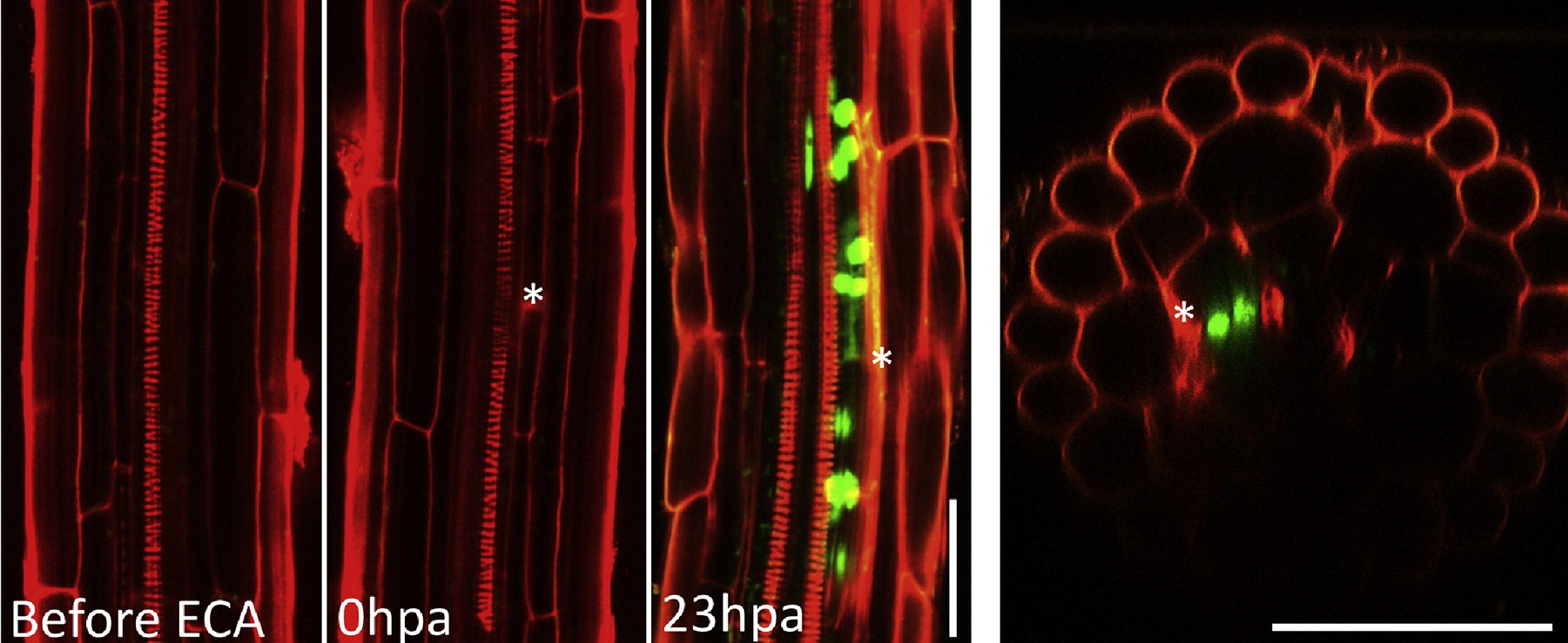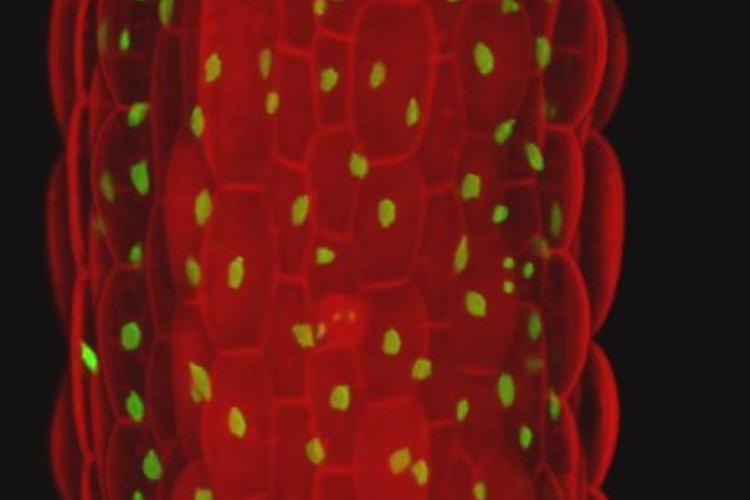During the course of their lives, immobile organisms are bound to encounter situations that put their structural integrity to the test. Attacks by predators, herbivores or harsh weather conditions all pose significant threats to the structure of an organism. For plants in particular, tissue damage or even the loss of an entire organ are possible outcomes. It is perhaps for this reason that plants have evolved an extraordinary capacity for regeneration.
The ability of root cells to regenerate is closely related to their cell division activity. Subsequently to the death of vascular cells following a treatment with the radiometric drug bleomycin, predominantly the endodermal cells surrounding the dead cell zone activate the cell division program. These endodermal cells undergo formative cell divisions that provide new cells for the innermost tissues, thus preventing the collapse of the root meristem. One of the key regulators of this process is the transcription factor ETHYLENE RESPONSE FACTOR 115 (ERF115). Cell death, whether induced spontaneously, by laser ablation or by bleomycin, results in the activation of ERF115 in cells adjacent to the dead cells, stimulating them to enter a cell division program. Plants with impaired ERF115 function are unable to recover from damage caused by root tip excision or bleomycin treatment, indicating the importance of this transcription factor in the regeneration process.
In follow-up work, we aim to identify upstream and downstream regulators and investigate the role of ERF115-related proteins. We also aim to apply the gained knowledge to improve the regeneration potential of other species, including poplar. Propagation of trees by cuttings is an ancient form of cloning used to maintain favorable traits in progeny plants. However, many plant species are not amenable to routine, commercial vegetative propagation. For over 60 years, auxin has been used to induce and accelerate de novo rooting of cuttings from such difficult-to-propagate species. However, strategies based on wound signaling responses that work in parallel with hormonal pathways have been completely ignored. By focusing on ERF115, we aim to contribute to the knowledge of the process of wound-activated regeneration of tree species.






